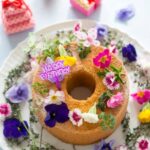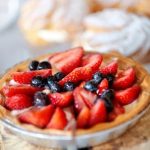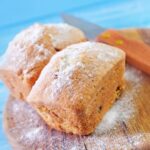Are you looking for the perfect icing recipe for your cake decorating? Look no further. In this article, we will explore the wonderful world of icing for cake decorating and provide you with a step-by-step guide on how to make the perfect buttercream icing. Whether you’re a beginner or an experienced baker, mastering the art of icing is essential for creating stunning and delicious cakes.
Icing is a crucial element in cake decorating, adding flavor, texture, and visual appeal to your creations. We will discuss the different types of icing, including buttercream, royal, fondant, and cream cheese, as well as the essential ingredients needed to make each one. Understanding these basics will empower you to experiment with various flavors and techniques to create a truly unique and personalized cake decoration.
To kick things off, we will dive into the step-by-step process of making buttercream icing. From selecting the right ingredients to achieving the perfect consistency and texture, we will cover everything you need to know to create a smooth and delectable topping for your cakes.
And if you’re looking for some creative inspiration, we’ll also share tips on decorating techniques using different types of icing – from piping to spreading and fondant embellishments. So grab your mixing bowls and let’s get started on our icing adventure.
Types of Icing for Cake Decorating
Buttercream, royal, fondant, and cream cheese are the four main types of icing commonly used for cake decorating. Each type has its own unique flavor, texture, and application method. Here is a closer look at each type of icing:
- Buttercream: This classic icing is made from powdered sugar, butter, milk, and flavoring. It has a rich and creamy texture that is perfect for piping and spreading onto cakes. Buttercream can also be easily colored and flavored to create different variations.
- Royal: Royal icing is made from powdered sugar and egg whites or meringue powder. It dries to a hard, smooth finish, making it ideal for intricate decorations such as flowers, borders, and lettering. Royal icing is often used for decorating gingerbread houses and cookies as well.
- Fondant: Fondant is a smooth and pliable icing that can be rolled out and draped over cakes for a flawless finish. It is made from sugar, water, gelatin, glycerin, and flavoring. Fondant can also be used to create decorative embellishments such as flowers, bows, and figures.
- Cream Cheese: Cream cheese icing is made from cream cheese, butter, powdered sugar, and flavoring. It has a tangy flavor that pairs well with carrot cake, red velvet cake, and other rich flavors. Cream cheese icing is best suited for spreading onto cakes rather than piping.
Understanding the characteristics of each type of icing will help you choose the right one for your specific cake decorating needs. Whether you want to achieve a smooth finish with fondant or create intricate designs with royal icing, selecting the appropriate icing will enhance the overall appearance and taste of your decorated cakes.
When learning how to make icing for cake decorating recipes such as buttercream or fondant it’s important to keep in mind that practice makes perfect. Don’t hesitate to experiment with different colors, flavors and decorative techniques to make each cake creation unique. With dedication and creativity you’ll soon master the art of using these different types of icings to elevate your cake decorating skills.
Remember – have fun with the process.
Essential Ingredients for Making Icing
Icing is an essential component of cake decorating, and the right ingredients can make all the difference in achieving the perfect taste and texture. Whether you’re making buttercream, royal icing, fondant, or cream cheese icing, there are some key ingredients that are necessary for creating a delicious and visually appealing finish to your cakes.
Powdered Sugar
Also known as confectioner’s sugar, powdered sugar is the main ingredient in most types of icing. It provides sweetness and helps create a smooth texture when mixed with other ingredients. When making icing for cake decorating, it’s important to sift the powdered sugar to remove any lumps that may affect the consistency of the icing.
Butter
Butter adds richness and flavor to the icing. When making buttercream icing, it’s crucial to use unsalted butter at room temperature to ensure a smooth and creamy texture. For other types of icing like cream cheese icing, using softened cream cheese in combination with butter can enhance both the flavor and texture of the frosting.
Milk
Milk is used to adjust the consistency of the icing. It’s important to add milk gradually when making the icing to achieve the desired thickness for spreading or piping onto your cakes. For dairy-free options, you can also use alternative milk such as almond milk or coconut milk.
Flavoring
Flavoring such as vanilla extract, almond extract, citrus zest, or cocoa powder can be added to customize the taste of your icing. It’s important to start with small amounts of flavoring and adjust according to your preference. Adding too much liquid flavoring can change the consistency of the icing.
By using these essential ingredients in different combinations and proportions, you can create a variety of icings that suit your personal preferences and complement the flavors of your cakes perfectly. Experimenting with different types of powdered sugar, butter alternatives, milk substitutes, and unique flavor combinations can lead to exciting new recipes for cake decorating enthusiasts looking to expand their skills in this delicious art form.
Step-by-Step Guide on How to Make Buttercream Icing
Buttercream icing is a classic choice for cake decorating, known for its smooth texture and delicious flavor. Below is a step-by-step guide on how to make buttercream icing for your next baking project:
- Start by gathering the essential ingredients: powdered sugar, butter, milk, and flavoring. These simple ingredients will come together to create a rich and creamy frosting that is perfect for decorating cakes.
- In a mixing bowl, beat the softened butter until it becomes light and fluffy. This step is crucial in achieving the desired smooth consistency of the buttercream icing.
- Gradually add the powdered sugar to the whipped butter, mixing well after each addition. This will help to create a thick and sweet base for your icing.
- Next, add in the milk and flavoring of your choice. Whether you prefer vanilla extract or almond extract, this step allows you to customize the flavor profile of your buttercream icing.
- Continue beating the mixture until it reaches a smooth and spreadable consistency. If necessary, adjust the amount of powdered sugar or milk to achieve the perfect balance of sweetness and texture.
By following this simple recipe, you can easily create a delicious and versatile buttercream icing that is perfect for all of your cake decorating needs. Whether you are piping intricate designs or simply spreading frosting onto a cake, this homemade buttercream icing will elevate your baked goods to the next level.
Tips for Achieving the Perfect Consistency and Texture
When it comes to cake decorating, the perfect icing consistency and texture are crucial for achieving professional-looking results. Whether you’re using buttercream, royal, fondant, or cream cheese icing, the right balance of ingredients and the proper mixing technique are essential.
One tip for achieving the perfect consistency is to start with the right ratio of powdered sugar to butter or cream cheese. For buttercream icing, a good rule of thumb is to use 2 cups of powdered sugar for every 1/2 cup of butter. This ratio can be adjusted slightly depending on your desired sweetness and thickness.
Another important factor in achieving the perfect texture is the amount of liquid used in your icing recipe. Adding too much milk or flavoring can lead to a runny consistency, while too little can result in a stiff and difficult-to-spread icing. Gradually add small amounts of liquid at a time until you reach your desired texture.
Finally, the temperature of your ingredients can greatly affect the consistency of your icing. Make sure your butter or cream cheese is at room temperature before mixing with powdered sugar, as this will ensure a smooth and creamy texture. If your icing becomes too warm and soft while working with it, simply chill it in the refrigerator for a few minutes before continuing.
| Tips | Details |
|---|---|
| Ratio of powdered sugar to butter | 2 cups powdered sugar: 1/2 cup butter |
| Gradually add liquid | Small amounts at a time until desired texture is reached |
| Ingredients temperature | Butter or cream cheese should be at room temperature |
Decorating Techniques With Different Types of Icing
When it comes to cake decorating, the icing is an essential element that can elevate the overall look and taste of your creation. There are various techniques for using different types of icing to decorate cakes, including piping, spreading, and fondant embellishments. Whether you’re a beginner or a seasoned baker, mastering these techniques can take your cake decorating skills to the next level.
One popular technique for decorating cakes is piping, which involves using a pastry bag and various tips to create intricate designs. Buttercream icing is commonly used for piping due to its versatility and ability to hold its shape. Royal icing is another option for piping as it dries hard, making it perfect for intricate designs that need to hold their form. Piping can be used to create floral patterns, borders, lettering, and more.
Spreading icing on a cake may seem simple, but achieving a smooth and even finish requires some skill. Buttercream and cream cheese icings are ideal for spreading due to their creamy texture. Using an offset spatula or bench scraper can help achieve a professional-looking finish. It’s important to chill the cake before spreading the icing to prevent crumbs from mixing into the frosting.
Fondant embellishments are popular for creating decorative accents on cakes. Fondant is a pliable sugar paste that can be rolled out and molded into various shapes such as flowers, ribbons, and figurines. These embellishments can add a sophisticated touch to any cake design. When working with fondant, it’s important to use powdered sugar or cornstarch to prevent sticking and ensure smooth shaping.
| Decorating Technique | Ideal Icing Types |
|---|---|
| Piping | Buttercream, Royal |
| Spreading | Buttercream, Cream Cheese |
| Fondant Embellishments | Fondant |
Common Mistakes to Avoid When Making Icing for Cake Decorating
When it comes to making icing for cake decorating, there are a few common mistakes that can easily be made. However, with the right knowledge and attention to detail, these mistakes can be easily avoided. One of the most common mistakes when making icing for cake decorating is not following the recipe measurements accurately. It’s essential to measure the powdered sugar, butter, milk, and flavoring precisely as per the recipe to achieve the perfect consistency and flavor.
Another mistake to avoid is using butter that is too soft or too hard. The butter should be at room temperature so that it can be easily beaten into a smooth and creamy texture without being too melty. Additionally, using high-quality ingredients is crucial for achieving the best results when making icing for cake decorating. Low-quality powdered sugar or flavoring can negatively impact the taste and texture of the icing.
Furthermore, overmixing the icing can lead to a runny consistency, while undermixing can result in a lumpy texture. It’s important to mix the ingredients just until they are combined to avoid either of these issues.
Lastly, not properly storing the icing can also lead to problems such as drying out or becoming too thin. It’s important to store icing in an airtight container at room temperature if using it within a day or in the refrigerator for longer storage.
By being mindful of these common mistakes when making icing for cake decorating, one can ensure that their cakes turn out beautifully decorated and deliciously frosted every time.
Creative Ideas for Using Icing for Cake Decorating
Creating beautifully decorated cakes can be a fun and rewarding experience, especially when you get creative with your icing. There are endless possibilities when it comes to using icing for cake decorating, from mixing different colors to experimenting with unique flavor pairings and creating intricate designs. In this section, we will explore some creative ideas for using icing to take your cake decorating to the next level.
Color Mixing
One of the most exciting aspects of cake decorating is experimenting with different colors of icing to create vibrant and eye-catching designs. You can mix primary colors to create custom shades or use gel food coloring to achieve bold and intense hues. Consider using a color wheel as a guide to create harmonious color combinations that will make your cakes stand out.
Flavor Pairings
In addition to adding visual appeal, icing can also contribute delicious flavors to your cakes. Experiment with different flavor pairings such as chocolate icing on a vanilla cake, or try adding citrus zest or extracts to buttercream for a refreshing twist. Don’t be afraid to think outside the box and combine unexpected flavors for a truly unique taste experience.
Decorative Designs
Icing offers endless opportunities for creating decorative designs on your cakes. From simple swirls and rosettes using buttercream, to intricate patterns using royal icing or fondant embellishments, there are countless ways to express your creativity through cake decorating. Consider incorporating edible glitter, sprinkles, or even edible flowers for an extra touch of elegance.
By incorporating these creative ideas into your cake decorating repertoire, you can elevate the visual appeal and flavor of your creations, making them truly unforgettable. The key is experimentation and practice – so don’t be afraid to try new techniques and have fun with your icing decorations.
Conclusion and Encouragement for Trying New Icing Decorating Techniques
In conclusion, mastering the art of making icing for cake decorating opens up a world of creativity and endless possibilities for creating stunning confections. Whether you choose to work with buttercream, royal icing, fondant, or cream cheese frosting, the key is understanding the essential ingredients and techniques to achieve the perfect consistency and texture.
By following a step-by-step guide and experimenting with different decorating techniques such as piping, spreading, and fondant embellishments, you can elevate your cake decorating skills to new heights.
It’s important to remember that there may be some common mistakes to avoid when making icing for cake decorating, but don’t let this discourage you. Instead, use these challenges as learning opportunities to improve your skills and develop a deeper understanding of the process. Additionally, get creative with your icing by exploring color mixing, flavor pairings, and decorative designs to add a personal touch to your creations.
So whether you’re a novice or experienced baker, don’t hesitate to try new icing decorating techniques. With patience, practice, and a willingness to experiment, you’ll soon be able to create beautifully decorated cakes that are sure to impress. So go ahead and dive into the world of cake decorating with confidence. And remember: the sky’s the limit when it comes to expressing your creativity through icing for cake decorating recipes.
Frequently Asked Questions
How to Make the Perfect Cake Icing?
Making the perfect cake icing starts with the right ratio of butter, powdered sugar, and flavorings like vanilla extract. It’s important to beat the mixture until it’s light and fluffy for a smooth texture.
What Icing Is Best for Cake Decorating?
The best icing for cake decorating depends on the desired outcome. Buttercream icing is versatile and easy to work with, while royal icing dries hard and is great for intricate designs. Fondant can also be used for a smooth, polished look.
How to Make Icing for a Cake at Home for Beginners?
For beginners making icing at home, start with a simple buttercream recipe that only requires butter, powdered sugar, and vanilla extract. Beat the ingredients together until smooth and creamy, then use food coloring to add a pop of color if desired. Remember to have fun and be patient as you practice your decorating skills!

Welcome to my blog about home and family. This blog is a place where I will share my thoughts, ideas, and experiences related to these important topics. I am a stay-at-home mom with two young children. I hope you enjoy reading it! and may find some helpful tips and ideas that will make your home and family life even better!





